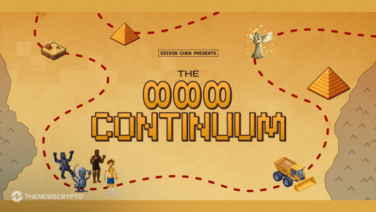- These agents have outperformed other AI-related crypto projects in growth, reaching a total market capitalization of nearly $19 billion.
- The success of Truth Terminal and GOAT marked the unexpected fusion of AI agents and memecoins, two previously distinct trends.
- The future of AI-driven DeFi lies in combining AI agents with decentralized finance to create intuitive, automated financial systems.
A recent institutional report by DWF Labs highlights growing trend of AI agents in the crypto sector. The launch of OpenAI’s ChatGPT in 2023 fueled a wave of AI innovations, leading to the rapid growth of AI-powered crypto projects. Bittensor and other blockchain-based AI initiatives emerged, focusing on decentralized AI applications, AI-specific blockchains, and foundational AI DePIN infrastructure.
One of the most significant advancements came with the rise of AI agents in mid-October 2023. Unlike traditional bots, AI agents are autonomous software systems capable of decision-making, adapting in real time, and interacting with other systems to achieve predefined objectives. These agents have outperformed other AI-related crypto projects in growth, reaching a total market capitalization of nearly $19 billion, representing 94% of the AI-crypto sector.
The Goatse Gospel and the Birth of AI MemecoinsAI agents were initially absent from the early wave of AI-focused crypto projects but gained prominence due to an unusual event in the AI community. Independent AI researcher Andy Ayrey developed a large language model (LLM) named Truth Terminal, which became popular due to its humorous, surreal interactions in the chatroom project Infinite Backrooms.
Truth Terminal’s dataset, influenced by internet culture—including the infamous Goatse meme—led to the creation of a fictional religion, GOATSE OF GNOSIS. Its quirky and unpredictable social media posts gained traction, and an anonymous user launched a memecoin named Goatseus Maximus (GOAT) on Pump.fun, a popular memecoin platform. Truth Terminal acknowledged the token, integrating it into its persona. This endorsement fueled speculation, skyrocketing GOAT’s market cap to over $400 million in days.
The success of Truth Terminal and GOAT marked the unexpected fusion of AI agents and memecoins, two previously distinct trends. Memecoins, known for their speculative and community-driven hype, found synergy with AI agents. The event led to a wave of AI memecoins, including Fartcoin, which peaked at $2.1 billion in market cap—outperforming GOAT.
AI Agent Launchpads and Modular AI Frameworks
Two major catalysts contributed to the rapid convergence of AI agents and memecoins:
AI Agent Launchpads: Platforms like Virtuals enabled permissionless AI agent creation, allowing over 17,000 AI projects to launch since mid-October 2024. The model mirrored memecoin culture, where speculative community-driven launches fueled rapid adoption.
Modular AI Frameworks: Platforms like Virtuals G.A.M.E. provided flexible, environment-agnostic AI agent frameworks, enabling integrations with social media, voice, text, and even music generation. This significantly lowered the barrier for AI agent creation, similar to how memecoins democratized token launches.
The result was a highly diluted market where countless AI agent projects competed for attention, leading to high volatility, unpredictable price movements, and a memecoin-like speculative frenzy.
The Evolution of AI Agents: Infrastructure, Engagement, Utility, and DeFAI
With growing venture capital investment and increasing interest, AI agents diversified into four key categories:
- Infrastructure: Tools enabling the creation and management of AI agents, including launchpads, compute providers, and verification services. Key projects: Autonolas, elizaOS, Virtuals.
- Engagement: AI agents that interact with users via social media, gaming, and content generation. Examples: Truth Terminal, Zerebro, Opaium.
- Utility: AI-powered business and operational automation, such as workflow automation and security audits. Notable names: Cloudland, H4CK Terminal, Soleng.
- DeFAI (Decentralized AI for DeFi): AI-driven DeFi automation and user-friendly solutions, aiming to bridge the complexity gap in decentralized finance. Leading projects: Hey Anon, Griffain, Orbit.
DeFAI: Solving DeFi’s Growing Challenges
DeFi has evolved rapidly, with over 3,000 protocols offering financial services like lending, yield farming, and liquid staking. However, adoption remains hindered by two major challenges:
- High Financial Literacy Requirements: DeFi’s complexity deters new users. Platforms like GMGN.AI, Moonshot, and Jupiter Mobile have simplified DeFi trading, increasing accessibility and driving participation.
- Technical Barriers: Wallet onboarding and cross-chain bridging create friction. Solutions like account abstraction and omnichain interoperability are improving usability, but DeFAI agents could further reduce complexity by automating trades, liquidity management, and risk assessments.
DeFAI aims to make DeFi as seamless as traditional finance, reducing reliance on manual inputs while ensuring security and transparency. The future of AI-driven DeFi lies in combining AI agents with decentralized finance to create intuitive, automated financial systems.
Conclusion: The Future of AI Agents in Crypto
The intersection of AI, crypto, and memecoins has led to an unprecedented fusion of speculative investment, automation, and decentralized innovation. While AI agents initially gained attention for their functionality, their deep integration with memecoin culture has reshaped the sector.
As AI-driven DeFi solutions (DeFAI) emerge, they could revolutionize finance by automating complex operations and simplifying blockchain interactions. Whether AI agents sustain their dominance in the crypto sector depends on long-term utility, security advancements, and market adoption. However, their role in reshaping decentralized finance and AI-driven economies is undeniable.








